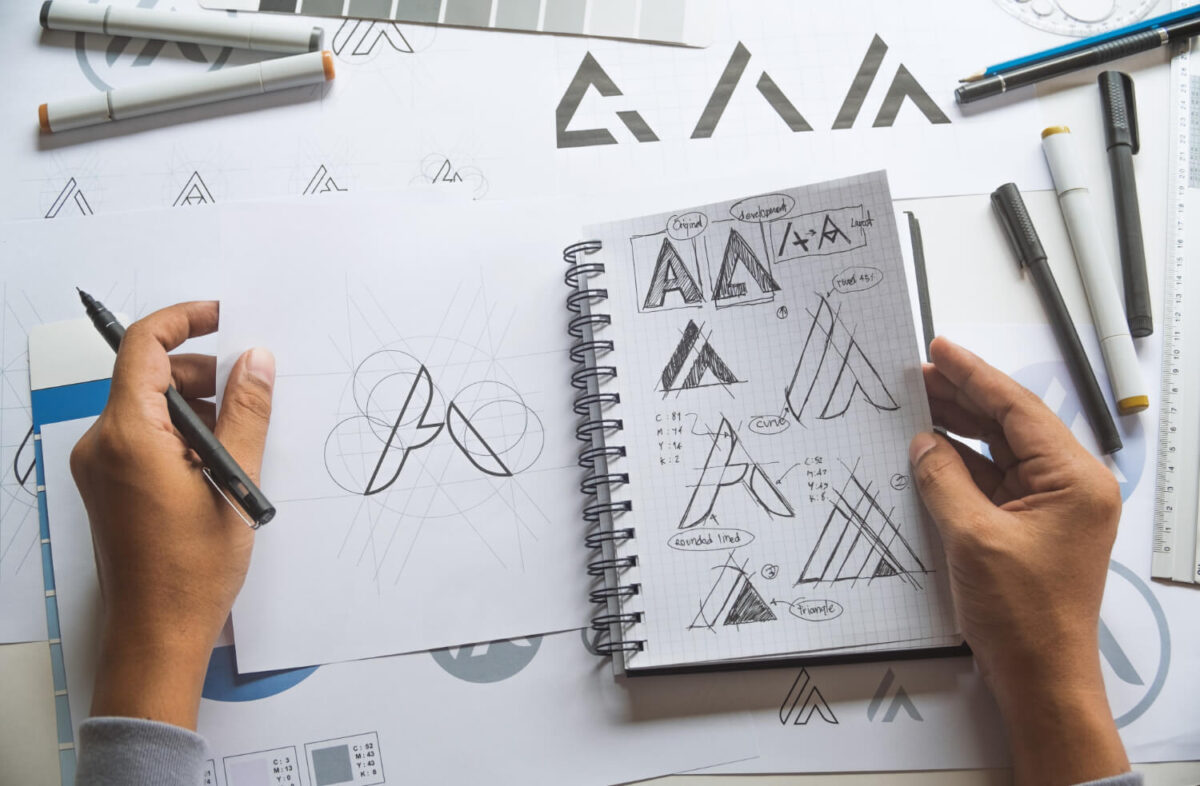Contact Information
How to Design a Logo [Step-by-Step Guide]
Logos are the face of a brand, representing its identity and values. A well-designed logo can leave a lasting impression and set the tone for your business.
Creating a logo might seem like a daunting task, but with a systematic approach, you can craft a logo that truly stands out.
In this step-by-step guide, we’ll walk you through the process of designing a logo that captures the essence of your brand.
1. Understanding the Importance of a Logo
Your logo is the visual representation of your brand’s identity. It helps customers recognize and connect with your business. A memorable logo can build trust and convey professionalism.
2. Defining Your Brand Identity
Before diving into design, define your brand’s personality and values. Is your brand modern, traditional, playful, or serious? This clarity will guide your design choices.
3. Gathering Design Inspiration
Research other logos in your industry for inspiration. Note what works well and identify gaps that your logo could fill.
4. Choosing the Right Colors
Colors evoke emotions and convey messages. Choose colors that align with your brand’s personality and resonate with your target audience.
5. Selecting Appropriate Fonts
Fonts should match your brand’s tone. Playful fonts for a children’s brand, professional fonts for a law firm, etc.
6. Sketching Your Logo Ideas
Start on paper. Sketch different logo concepts. Don’t worry about perfection; focus on capturing your ideas.
7. Digitalizing Your Sketches
Use design software to turn your sketches into digital files. This gives you flexibility for refining and editing.
8. Choosing the Design Software
Select design software you’re comfortable with. Adobe Illustrator, Canva, and Sketch are popular choices.
9. Creating the Initial Design
Translate your sketches into digital designs. Experiment with layout, colors, and fonts.
10. Iterating and Refining Your Logo
Create multiple versions of your logo. Refine each version based on feedback and how well they align with your brand.
11. Getting Feedback
Share your designs with peers, mentors, or focus groups. Collect constructive feedback to make informed improvements.
12. Finalizing the Design
Based on feedback, choose the best logo concept. Make final adjustments to elements like colors, shapes, and spacing.
13. Preparing Different Variations
Create versions of your logo that work across different platforms, such as social media profiles or business cards.
14. Ensuring Scalability
Your logo should look great whether it’s displayed on a billboard or a small mobile screen.
15. Saving and Exporting Your Logo
Save your logo in vector format for scalability. Export it in various file formats like PNG, JPEG, and SVG for different uses.
Conclusion
Designing a logo is a creative journey that involves understanding your brand, sketching ideas, refining designs, and gathering feedback.
A well-designed logo reflects your brand’s identity and leaves a memorable impression. Remember, a logo is a symbol of your brand’s values, so invest time and effort to craft a logo that truly resonates with your audience.
FAQs
- How much does it cost to design a logo?
Logo design costs can vary widely depending on the designer’s experience and the complexity of the project. - Can I design a logo without any design experience?
Yes, with the right tools and resources, anyone can create a logo. Consider using user-friendly design software or hiring a professional designer if needed. - What file formats do I need for my logo?
It’s recommended to have your logo in vector formats like SVG for scalability, as well as raster formats like PNG and JPEG for various online and offline applications. - How long does it take to design a logo?
The time it takes to design a logo depends on factors like the design process, revisions, and feedback. It can take anywhere from a few days to a few weeks. - What if I want to change my logo in the future?
As your brand evolves, you might consider updating your logo. Make sure any changes align with your brand’s updated identity and values.
Category
Recent Posts
- How Social Media Marketing Builds Brand Loyalty and Awareness
- How a Well-Designed Website Impacts Your Brand’s Credibility
- Web Design Trends Every Brand Should Watch Out for This Year
- Why Consistency is Key in Social Media Marketing Campaigns
- Choosing the Right Video Production Services for Your Business Goals
Quick Links
Address
34, Third Floor, Meghdhanush, Race Course, Vadodara 390007
2025 Copyright Aadharshila. All Rights Reserved.